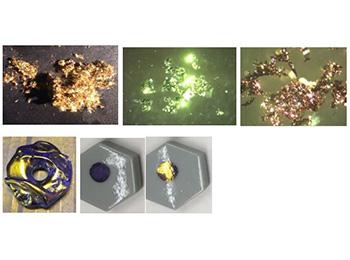This technology is based on the design of molecular, organic pigments, able to self-organize into non-conducting materials with reflective properties in the visible and near-infrared spectral range. These excitonic organic mirror materials can be exploited for either aesthetic or technical applications. They constitute a green and sustainable alternative to conventional metal-based mirror materials.
Applications
- Glass or metal decoration with lustrous coatings (prestige or masstige products)
- Window glass decoration with dichroic / duochrome aspect
- Plastics decoration with lustrous coatings (LED lamp reflectors, automotive headlight reflectors, automotive accessories, sanitary, …)
- Manufacture of lightweight and cheap mirrors (conversion of solar and photoelectric solar energy)
- Manufacture of very large mirrors (telescopes, LIDAR, …)
- Manufacture of tiny layers for photonic circuits
Competitive advantages
- Green alternative solution
- No metal / no electronic conductivity / lightweight
- Low production cost
- Ease of implementation on several substrates
- Compatibility with existing industrial coating processes
- Tunability of optical characteristics
Intellectual property
Family of three patents: - EP16306849.7 - EP18305893.2 - EP18305891.6
Keywords
Green and sustainable technology - Lustrous materials - Organic pigments exhibiting special optical effects - Organic mirrors - Aesthetic & technical reflective coatings - Duochrome / dichroic aspects
